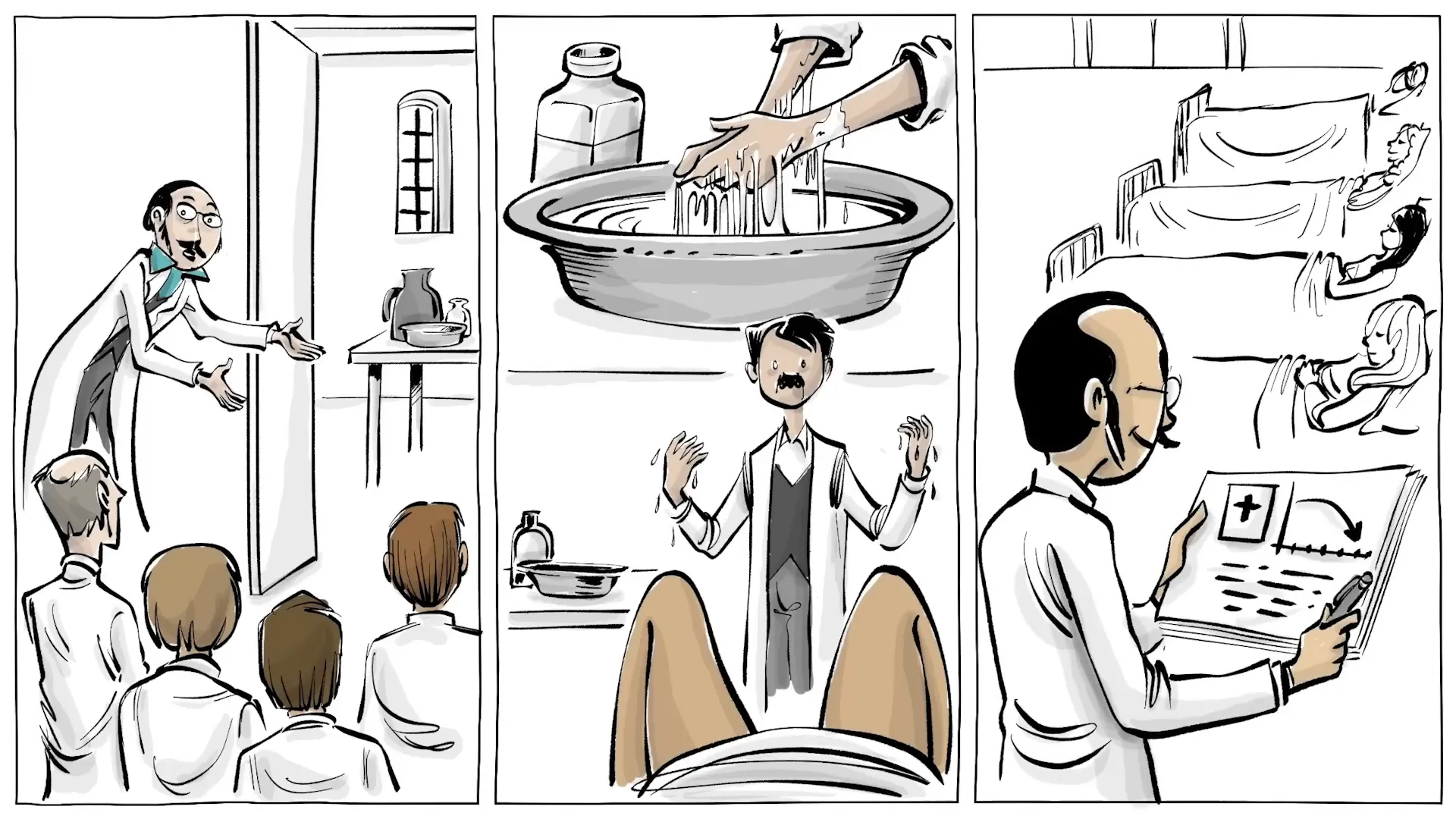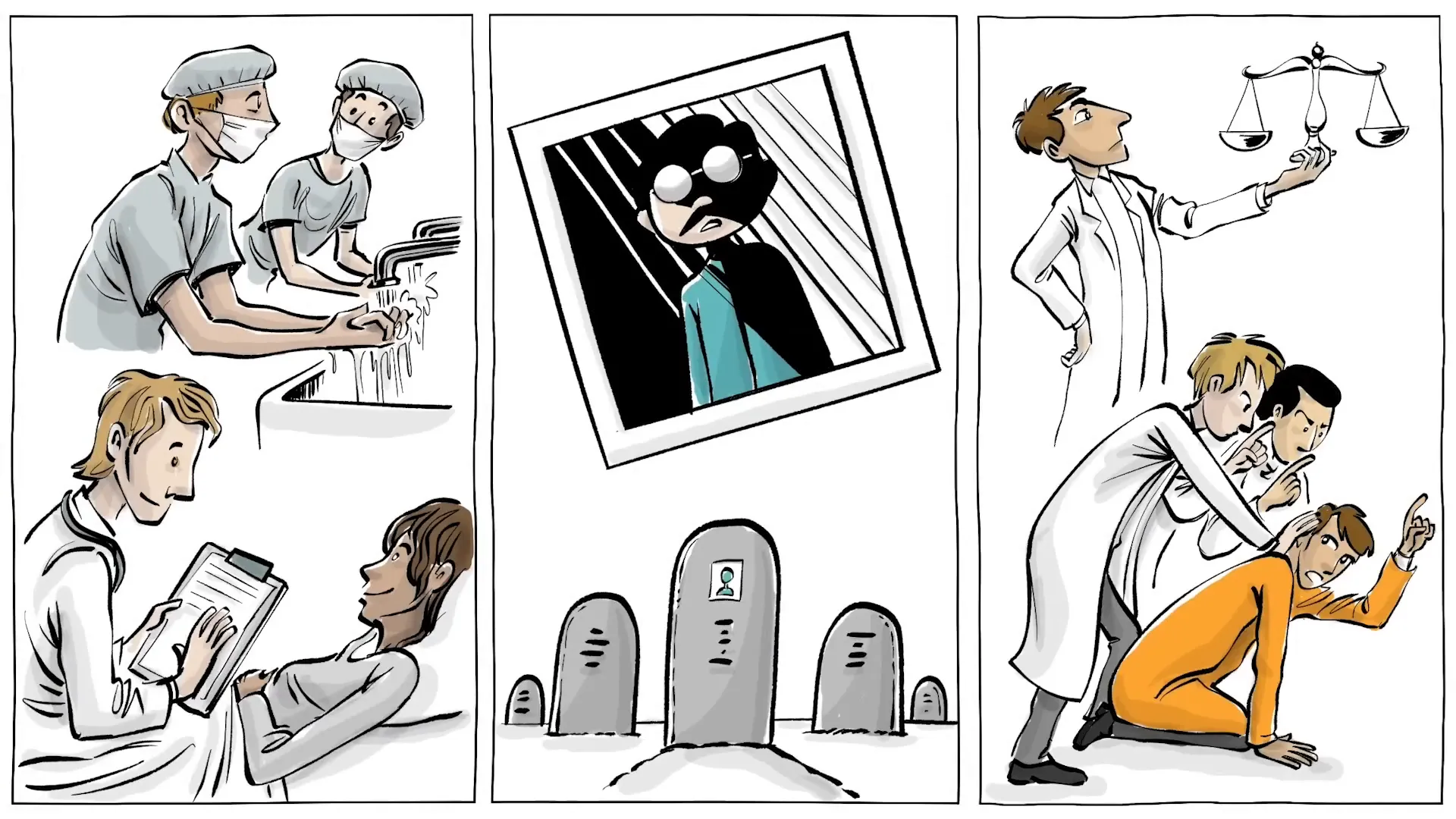Jan 2, 2025
The Tragic Legacy of Dr. Ignaz Semmelweis

Introduction
In the heart of 19th-century Vienna, a young physician made a simple yet groundbreaking discovery that would forever change the course of medicine. This discovery saved the lives of countless women but ultimately led to the ruin of the doctor himself. This is the story of Dr. Ignaz Semmelweis, a man whose fight for hygiene in medicine highlights both the brilliance and the tragedy of pioneering efforts in healthcare.
Dr. Ignaz Semmelweis
Dr. Ignaz Semmelweis was born in Hungary in 1818. Growing up in a modest family, he displayed an early aptitude for academics, which led him to pursue a medical education. After completing his studies, Semmelweis began his career at the maternity clinic of the Vienna General Hospital. It was here that he made observations that would change the medical field forever.

Semmelweis’ Observation
While working in the maternity clinic, Semmelweis noticed a disturbing trend: the mortality rate among women giving birth in the doctor-managed wards was alarmingly high due to childbed fever. In contrast, new mothers who delivered in the wards managed by midwives experienced far better outcomes. This discrepancy puzzled Semmelweis, who was deeply concerned about the welfare of the women and their infants.
Determined to uncover the root cause of this tragedy, Semmelweis engaged in scientific study and meticulous research. He scrutinized various factors that could contribute to the high mortality rate. His investigation led him to discover a critical detail: some doctors moved directly from performing autopsies to delivering babies. This realization sparked a hypothesis in Semmelweis's mind—that these physicians were inadvertently transmitting harmful pathogens to the new mothers.

The Discovery
To combat this issue, Semmelweis introduced a revolutionary practice: handwashing with a chlorine solution before doctors attended to women in labor. This simple yet effective measure dramatically reduced the maternal mortality rates in the physician-attended clinic. The results were astonishing, showing a significant drop in the number of deaths caused by childbed fever.
Despite the impressive results, Semmelweis faced fierce resistance from his colleagues. Many doctors were reluctant to adopt this new practice, as they simply did not want to wash their hands. The prevailing medical establishment of the time was skeptical of Semmelweis's ideas, largely because the germ theory of disease had not yet gained acceptance.

Triumph Turns to Tragedy
As Semmelweis continued to advocate for hand hygiene, he encountered increasing hostility from the medical community. The rejection of his ideas, combined with the tragic outcomes he witnessed, took a toll on his mental health. He began to experience severe depression and anxiety, as the weight of his seemingly futile battle against established medical beliefs became overwhelming.
In 1865, at the age of 47, Semmelweis was committed to a psychiatric institution in Vienna. Tragically, he died there just two weeks later. Official reports stated that he succumbed to a severe infection, but many believe he was likely beaten by the guards during his stay. The tragic end of Semmelweis's life serves as a poignant reminder of the challenges faced by pioneers in medicine.

Lasting Impact
Despite the tragic circumstances of his life and death, Semmelweis's work has had a lasting impact on the field of medicine. His findings eventually became standard practice in healthcare, saving countless lives in the process. However, the road to acceptance was long and fraught with obstacles, underscoring the difficulties faced by those who challenge established beliefs.
Semmelweis's story is a testament to the importance of innovation in science and medicine, even in the face of adversity. His advocacy for hand hygiene has paved the way for modern infection control practices, which are now integral to healthcare systems worldwide.

Max Planck’s Quote
The struggles faced by Semmelweis resonate with the words of German physicist Max Planck, who famously stated, “Science advances one funeral at a time.” More precisely, he noted, “A new scientific truth does not triumph by convincing its opponents and making them see the light, but rather because its opponents eventually die, and a new generation grows up that is familiar with it.”
This quote encapsulates the harsh reality that many innovators in science and medicine face—often, it takes the passage of time and generational change for new ideas to gain acceptance.

What Do You Think?
Semmelweis’s story raises important questions about the nature of innovation in science and medicine. Do we truly advance only one generation at a time? How do we ensure that new ideas and practices are embraced rather than rejected?
Conclusion
Dr. Ignaz Semmelweis's life and work remind us of the importance of challenging established norms and advocating for practices that can save lives. His dedication to hand hygiene has had a monumental impact on healthcare, and his tragic story serves as a powerful lesson on the resistance faced by those who dare to innovate. If you found this exploration of Semmelweis's legacy insightful, consider checking out more resources on this topic and support our mission to spread knowledge.
This article was created from the video The Dark Side of Science [The Sad Story of Dr Semmelweis] with the help of AI. It was reviewed and edited by a human.



